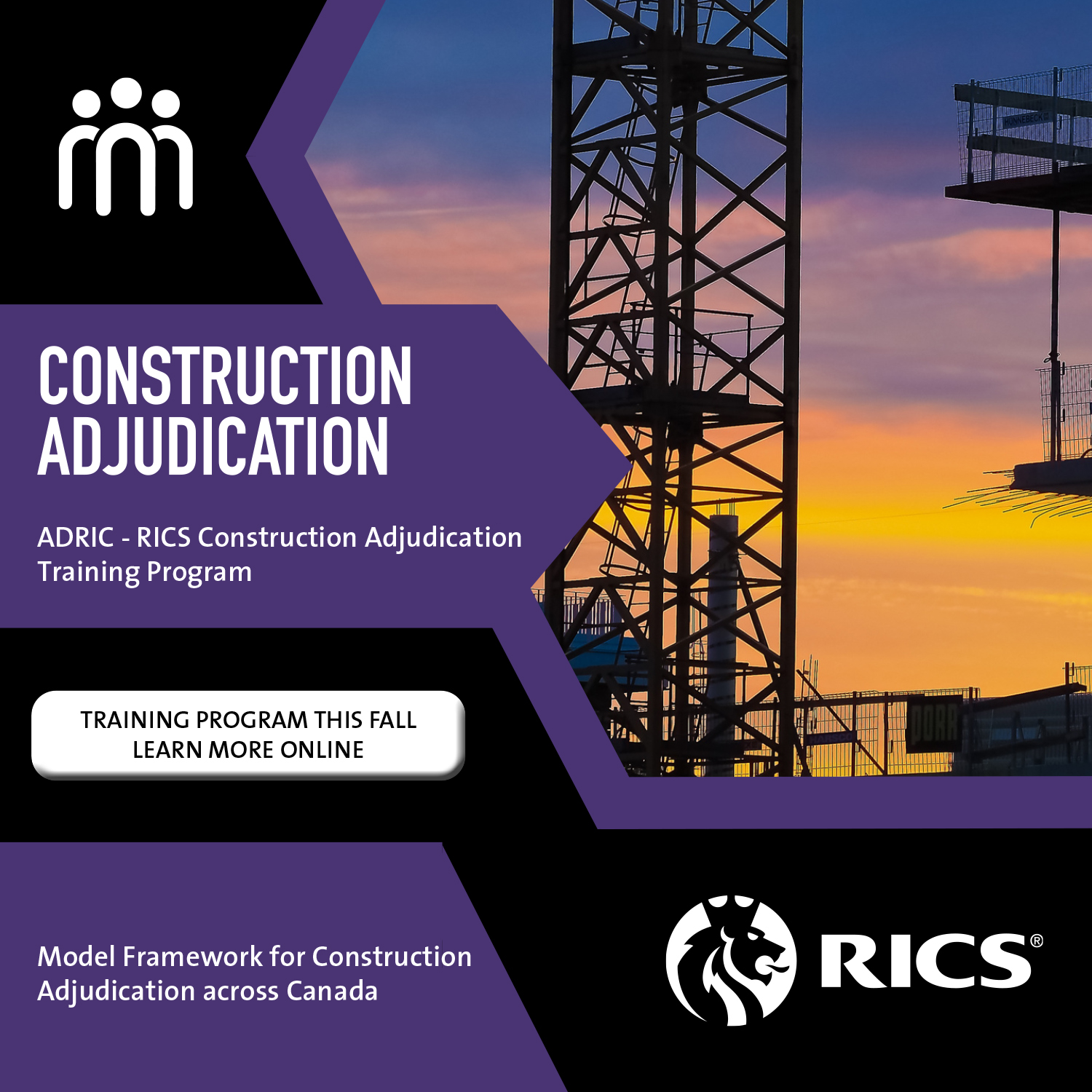
Planning for and Avoiding Construction Disputes – Part 3
By George Jergeas, PhD., P.Eng.
 In the concluding Part Three of this article, we focus on process, legal, and risk management tools that, if used, should reduce the frequency and scale of disputes during the construction phase of a project. In particular, we address contract and scheduling challenges.
In the concluding Part Three of this article, we focus on process, legal, and risk management tools that, if used, should reduce the frequency and scale of disputes during the construction phase of a project. In particular, we address contract and scheduling challenges.
Establish a Project Risk Management System
Design professionals and construction managers must consider risks, develop a risk register, and allocate appropriate contingencies during the planning phase. The Owner Project Management Team (OPMT) should then implement a monthly or quarterly risk management meeting, based on the size, scope, speed and complexity of the project. Recognize that as the project progresses, the elements of risk evolve from one risk to another. For example, once all underground utilities are in place and the foundation completed for a facility project, underground risks drop off the risk register and are replaced by new risks, whether previously identified or newly discovered.
Consult with Legal Counsel Concerning Liquidated Damages
The Owner’s project management team generally view the assessment of liquidated damages as an administrative matter, wherein the owner is only responsible for withholding such damages from the contractor’s payments once the work has exceeded the contract completion date. However, this is not a simple issue and is more legal than administrative. The OPMT should consult with legal counsel, before announcing a decision to assess liquidated damages, to determine whether their case for withholding liquidated damages is warranted or valid. Doing so may avoid disputes related to owner versus contractor delays at the end of the project.
Advise Senior Management and Legal Counsel of Potential Breaches of Contract
Breach of contract is another legal (rather than project management) issue. Such allegations will invariably give rise to legal disputes. Senior management, Owner Claim Group and legal counsel should be consulted, whenever the project team believes a breach has occurred or the contractor has announced their intent to breach the contract, to prevent such disputes. Early intervention and negotiation by senior management and/or legal counsel may help avoid or minimize a dispute.
Submittals of Short Interval Schedules
Most standardized scheduling specifications require routine schedule updates, either monthly or when specified contract milestones are achieved. Therefore, the OPMT should work with contractors to obtain their short interval schedules. These are frequently three-week bar charts showing what was scheduled and completed last week; what is scheduled this week; and what needs to be planned for the following week. Such schedules are often issued to superintendents and foremen by trade. The OPMT should ensure these short-term schedules are consistent with the overall project schedule and determine if the contractor is executing to their plan. Reviewing these documents will provide the OPMT with a better picture of what is happening on the project on a weekly basis—thus facilitating better communication between the project teams.
Enforce Scheduling and Time Extension Requirements
Owners should always enforce the scheduling specifications and adhere to the time extension requirements of the contract. Failure to do so may waive the requirements of the time extension and scheduling specifications to the detriment of the owner. The OPMT needs to keep in mind that since the contract was created by them, failure to enforce the provisions of the contract may later (during a dispute) be deemed a “waiver of the contract terms through a prior course of dealings.”
Establish a Protocol for Delay and Disruption Events
Many disputes do not arise as a result of the owner and contractor disagreeing about whether or not there was a delay or impact, but because the two sides cannot agree on how the claim should be documented and proven and the damages calculated. If the contract does not specify a protocol for delay analysis. At the outset of the project, the OPMT and contractors should establish how time extensions and impact claims should be developed, documented, submitted, and reviewed.
Document and Discuss Conflicts, Errors or Omissions in Contractor Submittals
The OPMT should review any contractor submittal (technical, administrative, or otherwise) in a timely and thorough manner, and in accordance with the requirements of the contract. Should the OPMT identify errors, omissions, or conflicts in a submittal, they should document their findings and provide them to the contractor in detail. Responses such as “Rejected, Resubmit” are virtually useless unless accompanied by a discussion of why the submittal was rejected.
Recognize the Importance of Scheduling
The OPMT should commit to proper schedule management practices, including the following:
- Thoroughly review and approve or reject all schedule submittals and updates;
- Attend all meetings where schedules are discussed, to help resolve schedule challenges and/or issues;
- Insist on strict compliance with schedule specification requirements;
- Maintain hard copy and electronic records of all documents related to schedule submittals; and
- Keep accurate records of all of time extension requests—when they were submitted, when/how they were responded to, and whether/when a time extension was issued.
Conclusion
Projects can be completed and disputes resolved in a timely manner without resorting to arbitration or litigation—with proper prior front-end planning, good quality design, a selection of good contractors and the application of industry best practices focused on a project team and collaborative approach.
The actions of owners, engineers, and contractors can make the situation worse, and serve as early warning signs that claims or disputes may occur. For owners, these actions include:
- Having unrealistic project expectations regarding completion time and risks;
- Failing to properly develop project scope and design; and
- Inappropriately shifting risks to the contractors.
For engineers, these actions include:
- Passing design responsibilities on to contractors;
- Agreeing to unrealistic expectations;
- Having a vested interest in disputes; and
- Producing ambiguous or conflicting documents.
A contractor may negatively impact the situation if they:
- Don’t satisfy their contract requirements for written communications or comply with “notice provisions”;
- Cut corners to offset bid deficiencies;
- Abuse subcontractors;
- Fail to read the contract or assume it will not be enforced;
- Fail to keep adequate project records; or
- Do not properly document claims.
George Jergeas, PhD., P.Eng. Professor Emeritus and former Director of Project Management, University of Calgary. George has a strong passion in collaborative relationships, claims & disputes, and project management consulting and training. George appeared as an Expert Witness before the Commission of Inquiry regarding the Muskrat Falls project. Currently he is engaged in a mediation of a construction dispute in Alberta.












